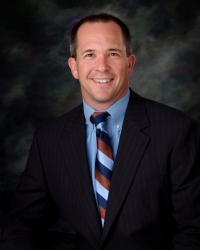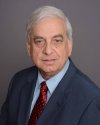The Superior Court reversed and remanded. Allocatur was granted on August 31, 2012.
Rule 4003.3 specifies available discovery regarding a testifying expert and provides that a party “may through interrogatories require (a) any other party to identify each person whom the party expects to call as an expert witness at trial and to state the subject matter on which each expert is expected to testify and (b) the other party shall have each expert so identified state the substance of facts and opinions to which the expert is expected to testify”. The Superior Court held that a subpoena directed to the expert, as opposed to a discovery request addressed to counsel, was an improper discovery request. In addition, the court held that communications “between an opposing party’s attorney and the expert witness retained by the party falls outside the express language of the Rule as not responsive to an interrogatory seeking the substance of the facts and opinions to which the expert is expected to testify”. Id. at 810. The Superior Court relied upon the narrow scope of permissible inquiry established by the Rule. Further, the court recognized the availability of additional discovery methods only upon “cause shown” as prescribed by Rule 4003.5. Finally, the court cited the principles of the adversary system and the need to shield mental processes to “enable attorneys to prepare cases for trial without fear that their work product will be used against their clients”.
The only exception recognized by the Superior Court was the potential circumstance wherein the attorney’s work product itself becomes an issue in the case stating “although the work-product doctrine is not absolute, we noted above that the privilege only surrenders to the need for discovery when the attorney’s work product itself becomes relevant to the action. Pa.R.C.P. 4003.3, Explanatory Comment at ¶ 4-5.” The court concluded that correspondence between counsel and a retained expert was relevant only as a result of the subject matter and had no independent basis of relevance to the action. In doing so, the court distinguished the specific discovery matter at issue from situations presented by the comments to the Rule wherein the communications between counsel and the expert had direct relationship to the claims or defenses.
The Superior Court’s ruling is consistent with the 2010 revisions to Federal Rule of Civil Procedure 26(b)(4) relating to expert discovery. The 2010 amendments provided specific work product protection to draft reports and communications between counsel and a testifying expert unless such communications (a) relate to compensation to the expert, (b) identify facts provided by the attorney for consideration by the expert or (c) identify assumptions that the expert relied upon in forming his or her opinions. The comments to the Rule cite many of the same principles relied upon by the Superior Court in Barrick including the need for the attorney to interact with retained experts without fear that such communications would be exposed in discovery.
The Supreme Court’s anticipated ruling following argument on April 10, 2013 will shape the context of attorney-expert communication for years to come. In a practical sense and as a matter of litigation practice, the protection of attorney-expert communication and the simplicity or complexity of such communication hangs in the balance. In an age of instantaneous written communication in the form of email messaging, a determination that such communication is relevant and discoverable could dramatically alter the preferred form of expert communication and increase the cost of any piece of litigation involving expert testimony. Communication in the form of email could be virtually eliminated in favor of telephone and face-to-face meetings.
Alternatively, in the absence of global protection for attorney-expert communication, an ad hoc analysis would be required on a case-by-case, document- by-document basis. Arguing against a bright-line rule, the dissent in Barrick opines that the communication between an attorney and an expert are not per se work product and that only an inspection of each document can support such a designation. While it may be true that every communication between an attorney and an expert may not reveal the attorney’s mental impressions, the implementation of such a principle would require an in camera inspection of every communication between an attorney and a testifying expert. Such an inspection, while potentially serving the purposes of broad discovery, would consume significant judicial resources in essentially every matter involving experts. An examination of every testifying expert’s file would be the norm and not the exception. Is the next natural progression a forensic inspection of computer files to ensure complete production?
Certainly the principles of full and complete discovery as to the opinions held by testifying experts and the factual basis of such opinions must be served. The practical application of a blanket bright-line rule protecting attorney expert communication results in increased litigation efficiency. Rules limiting the scope of expert testimony to matters contained in response to interrogatory or expert report requests adequately serve discovery purposes. The Federal Rules have clearly adopted an approach favoring protection of attorney- expert communication consistent with the Superior Court’s decision in Barrick.





















